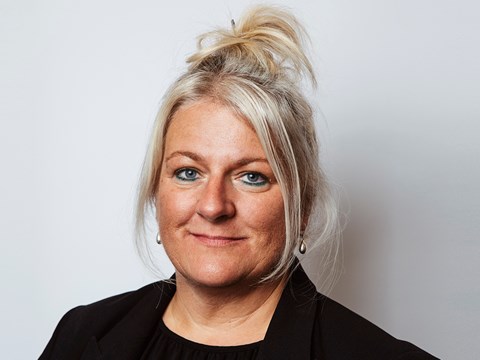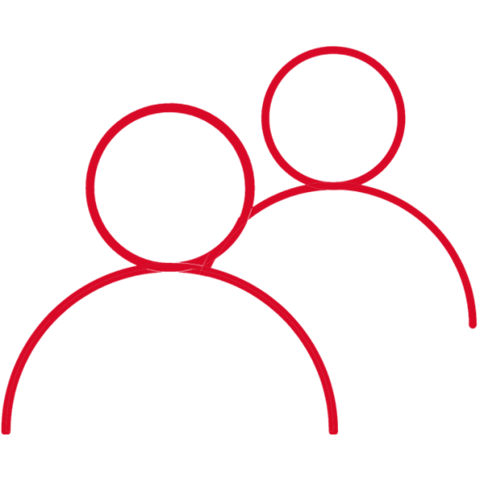Mastering the Art of Saying No Without Saying No
10 Mar 2025
Marketing teams are under more pressure than ever. You’re expected to be agile, creative, and responsive—all while delivering impact at speed. And when you’re in the moment, in a meeting, with a client or senior stakeholder asking for one more thing, it’s tough. You don’t want to seem slow, defensive, or like you’re not up for the challenge.
But here’s the thing: every yes costs something—whether that’s time, budget, or focus. Saying no isn’t about shutting ideas down; it’s about making sure every yes is intentional and delivers real value.
The reality highlighted by Marketing Week's 2025 Career & Salary Survey last week was a truly sombre read and certainly made me ponder what we can all do to help turn the tide.
According to the survey, the industry is at crisis point and at the edge of burnout, with findings such as 58.1% of marketers reported feeling overwhelmed in the past year, 56.1% feeling undervalued and 50.8% emotionally exhausted.
And yet we know there is intense pressure on workloads with 74% of marketers saying their workload has increased in the last year, and from a recent IPA Bellwether Report only 1 in 4 marketers feel they have enough time to do their job properly.
So how do you protect your team’s time and energy while delivering efficiently and effectively? How do you create stand-out work and keep relationships strong – both internally or as an agency with your clients when the pressure is on to say yes constantly? Because we all know that saying no is at times essential. Indeed, according to Forbes, strategically, it’s a hallmark of high-performing leaders, with research reporting that 90% of executives attribute their success to prioritisation and the ability to decline low-value tasks.
Here are seven ways to say no without actually saying no that I believe can help. Please do share and add any I’ve missed, not considered or you know have worked for you on your marketing journey.
1. Flip The Choice: Make trade-offs visible
💡 Every time you say yes to something, you’re saying no to something else. Bring that trade-off into the conversation.
In the moment:
🔹 “We can absolutely explore this - if we do, which of the current priorities should we push back to make space?”
🔹 “If we bring this forward, we’ll need to shift budget from X. Are we happy to make that trade-off?”
✅ Why it works: Makes priorities (and consequences) explicit, shifting the conversation from ‘why not?’ to ‘what matters most?’
2. The Priority Playbook: Deciding what matters most
💡 When everything is urgent, nothing is. Instead of pushing back, let them decide.
In the moment:
🔹 “OK, we’ve got five high-priority projects but capacity for three. Which ones will make the biggest impact?”
🔹 “Do we want to optimise for speed or for quality here? What’s the right criteria to help us make the right priority calls given resource, time and budget available?”
✅ Why it works: It puts the decision in their hands and uses frameworks like MoSCoW (Must-have, Should-have, Could-have, Won’t-have) to create alignment.
3. The Strategic Yes: Anchor to business goals
💡 Not all great ideas are great right now. Keep the focus on the bigger picture.
In the moment:
🔹 “That’s an interesting idea. Right now, our focus is on driving customer retention. Does this align with that priority?”
🔹 “Love this - let’s put it in the mix for our next planning session so we can do it properly.”
✅ Why it works: It reframes the conversation around long-term impact rather than short-term pressure.
4. Buy Time: The strategic pause
💡 Not every decision needs to be made in the moment. Give yourself space to think.
In the moment:
🔹 “That’s a great point - let me take this away and come back with some options.”
🔹 “Good challenge - let me check what we can move around, and I’ll follow up this afternoon.”
✅ Why it works: Stops knee-jerk agreements, giving time to assess what’s actually possible.
5. Test Before You Invest: The power of the pilot
💡 Saying no outright can shut doors and stop your team or peers making suggestions in the future. A test-and-learn approach keeps the conversation open, and productive.
In the moment:
🔹 “We don’t have full capacity for this, but we could test a smaller version first and see what impact it has.”
🔹 “Before we commit, let’s run a quick pilot - if the results look good, we can scale it.”
✅ Why it works: A small experiment keeps momentum without derailing core priorities.
6. Reframe the Problem: Find a (potentially) smarter solution
💡 Sometimes a request is valid - but the solution isn’t. Help reshape the ask, and shape the brief
In the moment:
🔹 “If the goal is better engagement, rather than adding another campaign, could we refine what’s already in motion?”
🔹 “What’s the real problem we’re trying to solve here? There might be a faster way to tackle it.”
✅ Why it works: Turns ‘no’ into a problem-solving conversation, keeping everyone on the same side.
7. The Budget Reality Check: We can if…
💡 Budgets are under more pressure than ever - frame decisions in terms of financial trade-offs
In the moment:
🔹 “We can make this happen - if we reallocate budget from X. Does that work?”
🔹 “If this is a priority, we’ll need additional budget to do it right. Do we have flexibility on that, and who needs to sign that off to hit your proposed deadline?”
✅ Why it works: Shows you are solutions-focused while keeping financial constraints in check.
Saying NO is really about saying YES - to the RIGHT Things.
Protecting your team’s focus isn’t just about workload - it’s about impact. Mastering the art of the strategic ‘no’ keeps your marketing on point, your teams motivated, and crucially your influence intact. But knowing when and how to push back is a skill - one that can be learned, honed, and embedded in your team’s culture.
If you want to equip your marketers with the confidence and techniques to manage priorities effectively, come and have a chat and explore how AAR Upskill can help make a real difference.
And please do share this post and add any other suggestions in the comments. I’d love to get to 10 😊.
About The Author




